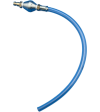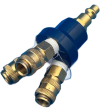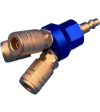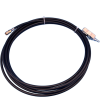
Hello, dear readers! Have you ever thought about the hidden world inside your home? No, I’m not talking about those pesky dust bunnies under your bed or that mysterious sock-stealing force residing in your dryer. I'm talking about your air ducts! These unseen conduits play a crucial role in maintaining your home's air quality, ensuring that every breath you take is as fresh and clean as possible. But, what if your air ducts are harboring unseen contaminants? Let’s dive into the mysterious world of air ducts and unmask what’s really lurking in there!
The Historical Context of Air Ducts
Before we delve into the nitty-gritty of what can end up in your air ducts, let’s set the stage with a bit of history. Air ducts have been around for a while, evolving from simple ventilation systems in ancient buildings to the complex HVAC (Heating, Ventilation, and Air Conditioning) systems we know today.
Ancient Beginnings
- Ancient Rome: The Romans were among the first to use rudimentary duct systems, with their hypocaust heating systems that heated floors and walls in their villas and baths.
- Middle Ages: In medieval times, castles used chimneys and ducts to vent smoke and distribute heat.
Modern Advancements
- 19th Century: The Industrial Revolution brought about the need for more sophisticated ventilation, leading to the development of the first mechanical air conditioning system in the early 20th century.
- 21st Century: Today, air duct systems are integral to modern building design, ensuring efficient climate control and air quality.
Common Contaminants in Air Ducts
Now, onto the main topic: what exactly is lurking in those air ducts? Here’s a list of the most common culprits that could be compromising the air quality in your home:
1. Dust and Debris
Dust is inevitable. It’s everywhere, and your air ducts are no exception. Dust can accumulate over time, forming layers of debris that can circulate throughout your home.
- Real-World Scenario: Think about that moment when you first turn on the heater in the fall, and you catch a whiff of burning dust. That’s a sign dust has been accumulating in your ducts.
- Impact: While a little dust might seem harmless, it can aggravate allergies and respiratory conditions when it builds up.
2. Mold and Mildew
Where there is moisture, there can be mold. Air ducts that are not properly insulated or are exposed to humidity are prime candidates for mold growth.
- Real-World Scenario: After a particularly humid summer, you notice a musty smell every time your AC kicks on—it could be mold.
- Impact: Mold can pose significant health risks, especially for those with asthma or allergies, and can even affect the structural integrity of your home.
3. Pollen and Allergens
Your air ducts can act as a magnet for pollen and other allergens, especially if your home has poor filtration.
- Real-World Scenario: During spring, you notice your allergies are worse indoors than out. Pollen might be the culprit, circulating through your air ducts.
- Impact: This can be a nightmare for allergy sufferers, making it feel like spring allergies last all year.
4. Pet Dander
Pet lovers, beware! Your furry friends are adorable, but they can contribute to air duct contaminants.
- Real-World Scenario: You have a couple of cats and a dog, and despite regular cleaning, you find hair and dander all over the house, including in the air ducts.
- Impact: Pet dander can exacerbate allergies and asthma symptoms, especially in sensitive individuals.
5. Insects and Rodents
Yes, it’s unappealing to think about, but your air ducts can become a haven for insects and rodents.
- Real-World Scenario: You hear scratching noises from your ducts or notice a foul smell. These are telltale signs of unwanted guests.
- Impact: Besides being a health hazard, these pests can damage ductwork and spread disease.
The Impact of Contaminants on Health and Efficiency
Understanding the types of contaminants is one thing, but understanding their impact is another. Let's explore how these contaminants can affect your health and the efficiency of your HVAC system.
Health Impacts
- Respiratory Issues: Contaminants like mold, dust, and dander can worsen asthma and cause respiratory infections.
- Allergies: Increased exposure to allergens can lead to heightened allergy symptoms, including sneezing, itchy eyes, and runny noses.
- Long-term Health Risks: Prolonged exposure to poor air quality can lead to chronic respiratory diseases and other health issues.
Efficiency Impacts
- Reduced Airflow: Accumulated debris can restrict airflow, forcing your HVAC system to work harder.
- Increased Energy Bills: An overworked system is less efficient, leading to higher energy consumption and increased costs.
- System Longevity: Regular maintenance ensures your HVAC system runs smoothly, reducing wear and tear and extending its lifespan.
Current Trends in Air Duct Maintenance
In today’s world, indoor air quality is more important than ever. Here are some current trends in air duct maintenance that can help keep your home's air clean and safe:
1. Advanced Filtration Systems
- High-Efficiency Particulate Air (HEPA) Filters: These filters are designed to trap 99.97% of particles, significantly reducing the number of contaminants in your air ducts.
- Electrostatic Filters: These filters use static electricity to attract and trap particles, improving air quality.
2. Regular Cleaning and Inspection
- Professional Cleaning: Hiring professionals to clean your air ducts regularly can help ensure they are free from harmful contaminants.
- DIY Maintenance: While professional cleaning is crucial, regular DIY maintenance, like changing filters and vacuuming vents, can help maintain air quality.
3. Smart HVAC Systems
- Smart Thermostats: These devices allow for better control over your HVAC system, optimizing efficiency and reducing the risk of dust accumulation.
- Air Quality Monitors: These monitors provide real-time data on your home’s air quality, allowing you to address issues promptly.
The Future of Air Duct Systems
As technology advances, so too will the systems that keep our homes comfortable and safe. Here are some potential future developments in air duct systems:
1. Nanotechnology
- Self-Cleaning Ducts: Imagine ducts that use nanotechnology to clean themselves, reducing the need for professional cleaning.
- Enhanced Filtration: Nanofilters could trap even the smallest particles, significantly improving air quality.
2. Green HVAC Systems
- Energy Efficiency: Future systems will likely focus on sustainability, with an emphasis on reducing energy consumption and carbon footprints.
- Eco-Friendly Materials: Duct systems made from recyclable or biodegradable materials could become the norm.
3. AI and Automation
- Predictive Maintenance: AI could predict when your system needs maintenance, preventing issues before they arise.
- Automated Cleaning: Robots could be deployed to clean ducts, ensuring they remain contaminant-free with minimal human intervention.
A Balanced Perspective
While the presence of contaminants in your air ducts can be concerning, it’s important to maintain a balanced perspective. Here's how you can approach air duct maintenance:
- Stay Informed: Understanding the potential contaminants and their impacts can help you make informed decisions about maintenance.
- Regular Maintenance: Routine cleaning and inspections can go a long way in keeping your air ducts clean and efficient.
- Don't Panic: Not all contaminants pose an immediate threat. Assess the situation and act accordingly.
By staying proactive and informed, you can ensure that your home remains a safe and comfortable haven for you and your family.
Final Thoughts
So, what’s really lurking in your air ducts? From dust and dander to mold and mice, it turns out there's quite a bit. But by staying informed and taking regular maintenance seriously, you can breathe easy knowing that you’re doing your part to keep your home’s air clean and healthy.
Remember, the key to a healthy home is not just dealing with problems as they arise but also preventing them before they start. Happy breathing, and here’s to fresh and clean air in every corner of your home!












Write a comment